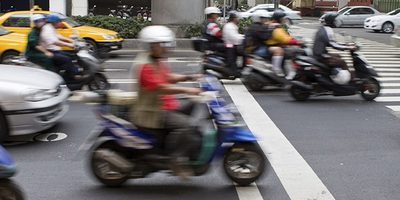
National Road Safety Grant win to drive NSW safe speed initiatives
The George Institute for Global Health has secured funding from the Australian Government to test a community-led approach to designing locally tailored programs to reduce harm caused by unsafe speeds on our roads.
Five local Government Areas (LGAs) - Mid-Western Regional Council (Mudgee), Port Stephens Council, City of Sydney, City of Canterbury Bankstown, and City of Coffs Harbour - will all participate in the pilot, from which a detailed guide for national use will be developed if the model proves successful.
The National Road Safety Action Grants program provides non-infrastructure grants to deliver the Australian Government’s implementation of the National Road Safety Action Plan 2023-25 critical to reducing fatalities and serious injuries on Australian roads. The program forms part of the Australian Government’s efforts to achieve Vision Zero – a reduction of the annual number of fatalities by at least 50 per cent and serious injuries by at least 30 per cent by 2030, and no deaths on Australia’s roads by 2050. Around 1,200 people are killed each year on Australia’s roads and about 40,000 are seriously injured. This includes drivers, passengers, pedestrians, and riders.
Prof. Julie Brown, Head of the Injury Division at The George Institute and Professor of Population Health at UNSW Sydney, said a safe road system requires speed limits and travel speeds that are appropriate for different environments and road users, and for drivers to comply with these limits.
“But for this to work, we need a big shift in public demand for safe speeds because what we’re doing now isn’t working. We need to make it unacceptable to speed.
“At its core, this project is about finding a new way to bring about important shifts in attitude, and we’re excited to secure the funding to investigate new ways of tackling speeding behaviours and ultimately to reduce Australia’s burden from road trauma,” commented Prof. Brown.
Research shows the risk of being involved in a fatal crash doubles with every 5 km/h increase in speed over the limit in a 60km/h zone1 and that the probability of death or serious injury for unprotected road users like pedestrians and riders in a crash increases exponentially with increasing vehicle speed.
Speed limit reductions by as little as 10 km/h have provided the lowest cost, greatest value for reducing fatalities and serious injuries.
Prof Brown and her team will adopt a Community Jury approach, where representative groups of 12-20 community members are presented with a policy dilemma for deliberation. Like a real jury, they are provided evidence about the nature of a problem and have the chance to cross-examine a range of experts, including local experts from each of the five participating LGAs.
“People’s views can be transformed through listening to the reasoning of others and being asked to justify their position,” explained Prof Brown.
Community jurors deliberate on the evidence and come up with recommended interventions to increase their local community’s demand for and acceptance of safe speeds, which will be reviewed by road safety experts against APEASE criteria (acceptability, practicability, effectiveness, affordability, spill-over effects, and equity). Interventions designed by the juries will be piloted in each of the five participating local government areas, and their impact on behaviour and attitudes evaluated.
“If successful, the outcomes of this work will deliver a new model for local governments to use in partnership with local communities to shift community attitudes to speed and speed management interventions, increase shared responsibility for achieving safe speeds, and reduce risky behaviours associated with speed,” said Senator Anthony Chisholm, Federal Assistant Minister for Regional Development.
Ultimately the program will have a positive impact on driving down the preventable loss of life and devastating injuries on Australian roads.
Reference
- Kloeden CN, McLean AJ, Moore VM, Ponte G, 1997 Travelling Speed and the Risk of Crash Involvement Volume 1: Findings NHMRC Road Accident Research Unit, The University of Adelaide




